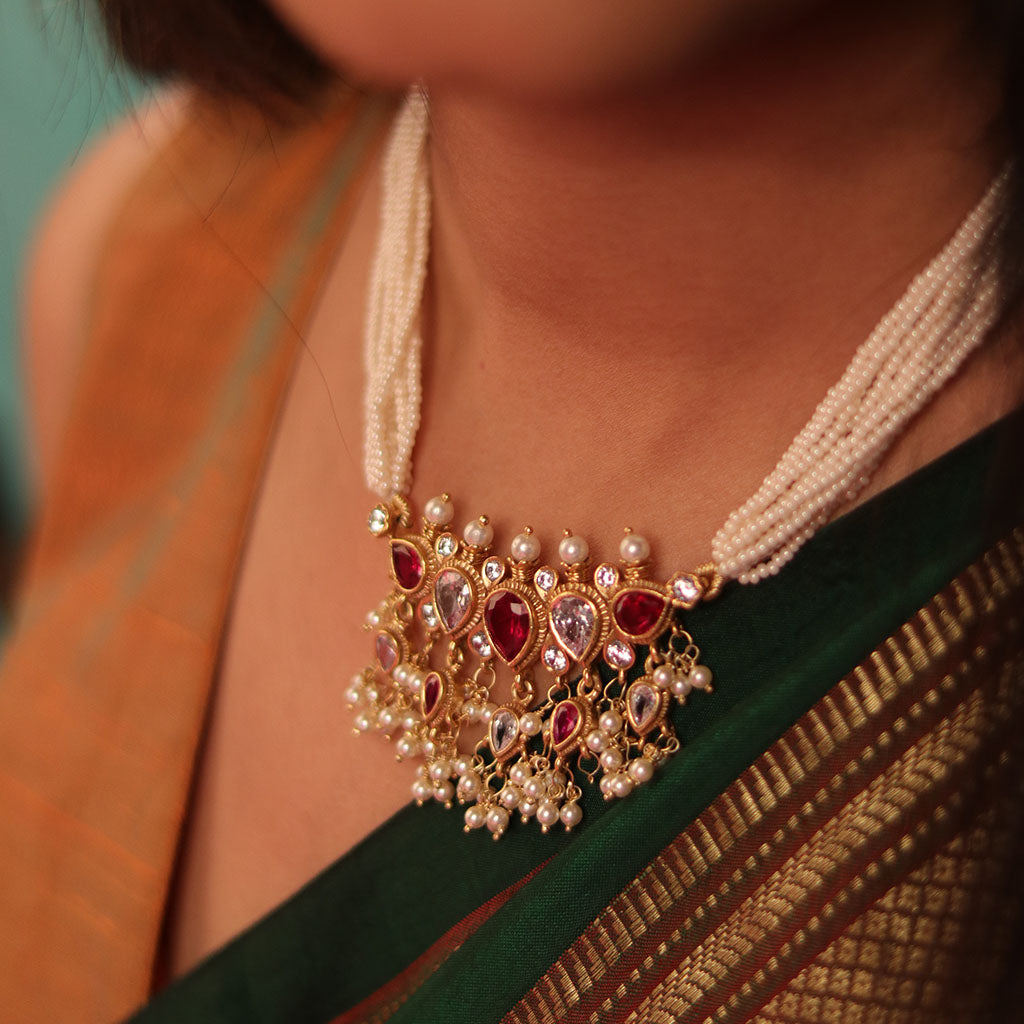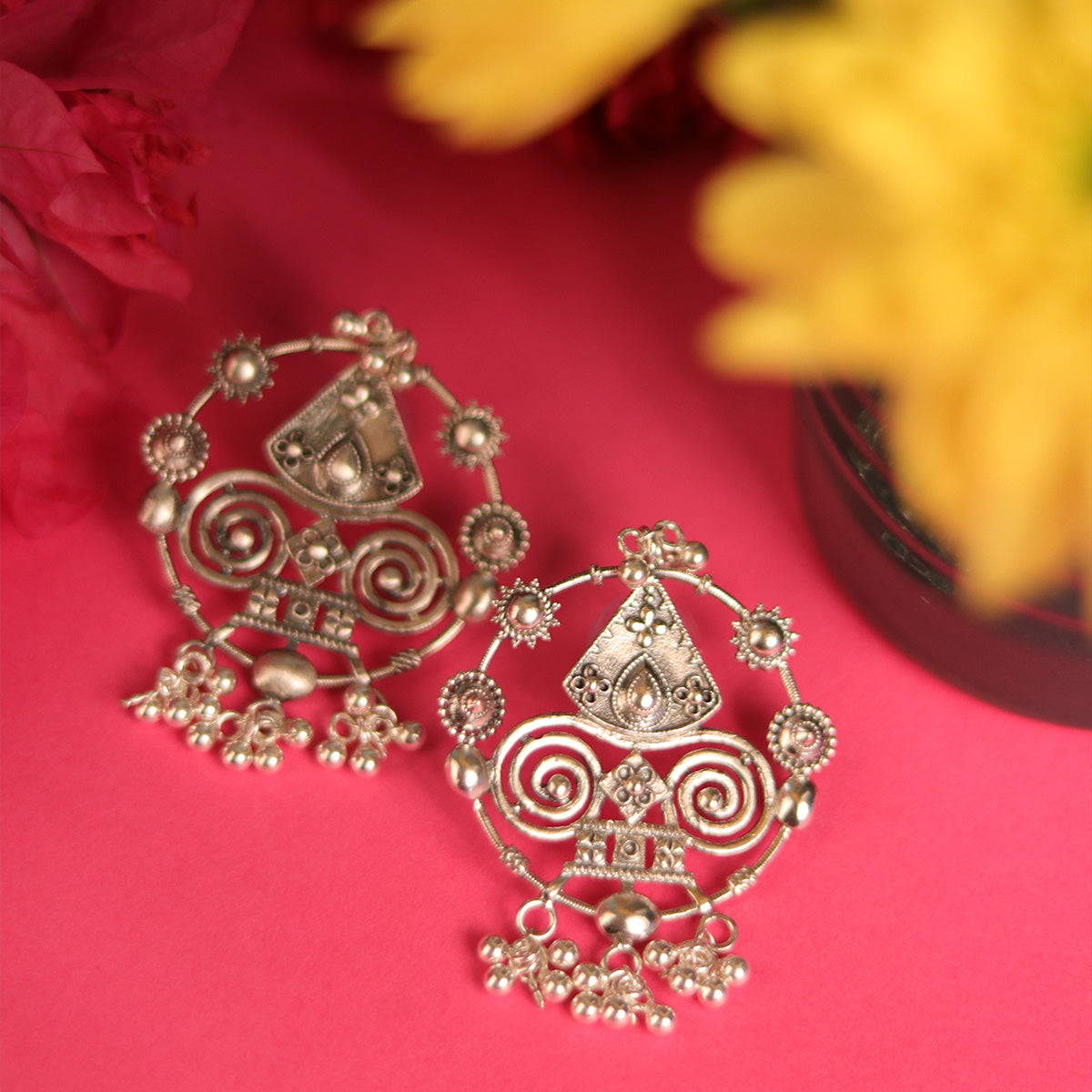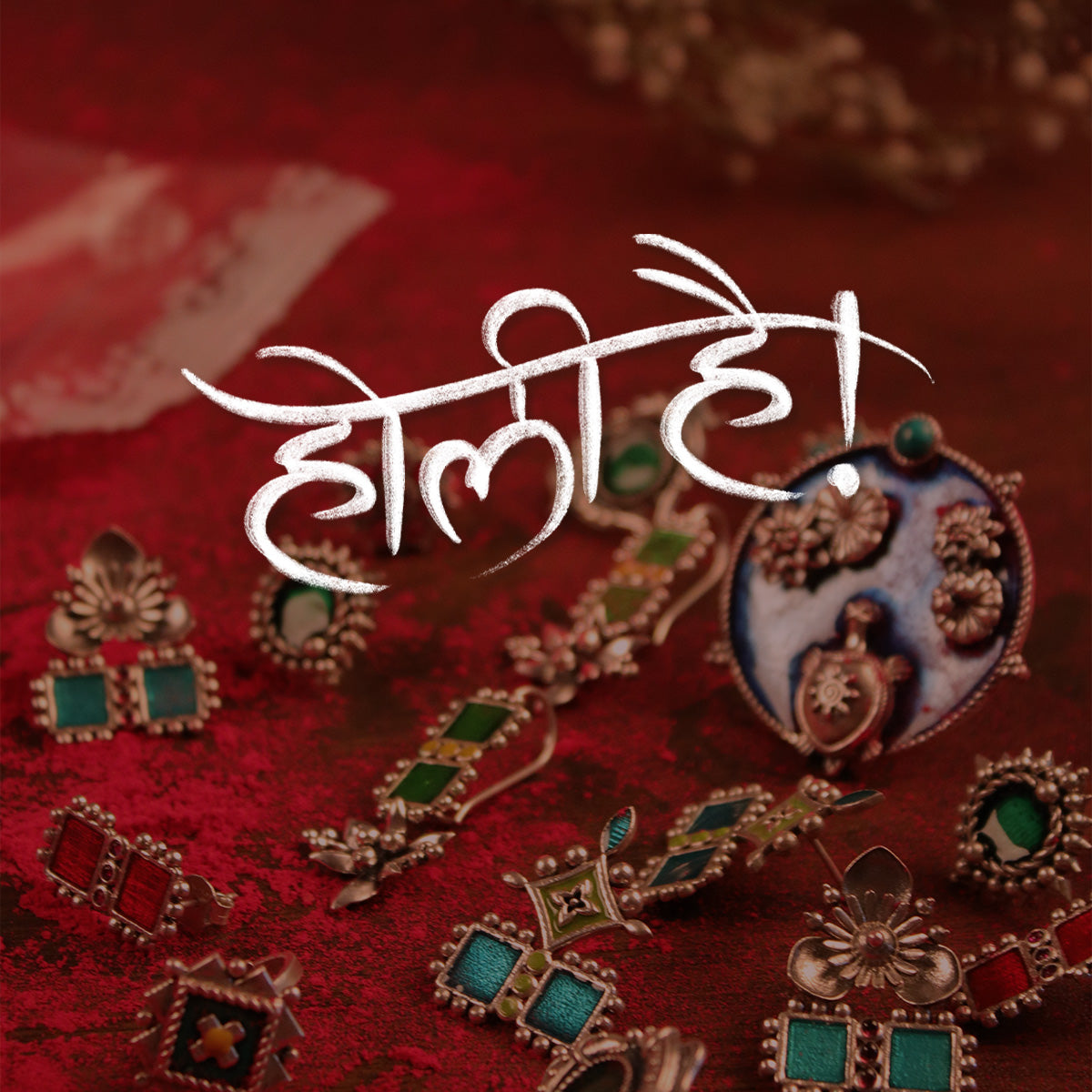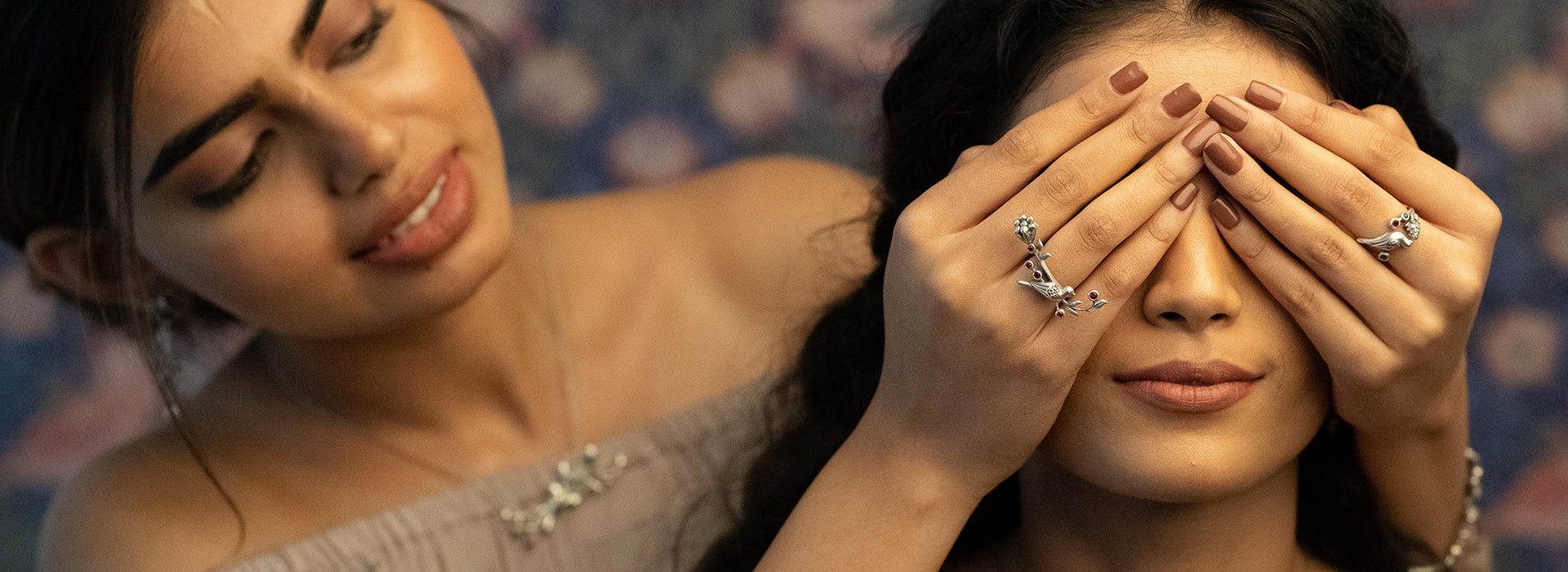Maharashtrian traditional jewellery is known for its simple yet bold designs. The compositions are meaningful and they have made an important tapestry of most maharashtrian households from centuries. Some of the popular types of Maharashtrian jewellery include:
Bakuli Haar: Bakuli Haar, also known as "Vakula Mala," is a traditional necklace made with 5 petal simple floral motifs and tied them in line to make a beautiful necklace. Many bakuli haar are available in 2 layers or more and have a size of 24 to 28 inches.
Overall, the Bakuli Haar is a beautiful and symbolic piece of jewelry that holds a special place in Maharashtrian culture and traditions.
Maharashtrian Silver Tanmani Necklace: The central pendant is called as “khod” by vernacular artisans. Its is usually a stone casing of either 5 or 7 stones, with capping of pearls on top side and also latkans of smaller pearls. the 5 or stones often adorned with precious stones like diamonds, rubies, or emeralds. The necklace is known for its versatility. IT can be worn on various occasions, from weddings to festivals. It is a symbol of Maharashtrian culture and heritage, reflecting the region's rich traditions in jewellery making.
Maharashtrian Nath: The Maharashtrian Nath is a traditional nose ring worn by women all over the world. It is typically large, Gold wired and tied with pearls and ruby in the center how traditional maharashtra Nath would look like. With time and region there have been many variations and versions made the same. It's often worn on special occasions or as part of traditional attire. It is also a significant piece of jewelry in Maharashtrian culture, reflecting the region's rich heritage and traditions.
Bugadi (Ear Ornaments): The Bugadi are worn in the helix region of the ear and show an incredible variety in their designs Each has a thin and long plug which is hollow and has a screw. The screw has balls at each side which help secure the Bugadi in place. The ball under the helix is usually slightly bigger and shows variety in designs. The Bugadi are differentiated based on these designs.  Kudi: Kudi is generally circular sequence of 7 pearls of 7 rubies set in collate or tied together to form most simple yet beautiful ear ornament. Kudi is a traditional Maharashtrian earring that is typically gold and pearl or stone. It is characterized by its dome-like shape and intricate designs. Kudis are often worn in pairs and are considered auspicious.
Kudi: Kudi is generally circular sequence of 7 pearls of 7 rubies set in collate or tied together to form most simple yet beautiful ear ornament. Kudi is a traditional Maharashtrian earring that is typically gold and pearl or stone. It is characterized by its dome-like shape and intricate designs. Kudis are often worn in pairs and are considered auspicious.
Jodvi (Toe Rings): Married women in Maharashtra often wear toe rings, usually made of silver. They are considered auspicious and symbolize the marital status of the wearer.
These pieces of jewelry enhance the beauty of Maharashtrian women and hold deep cultural and traditional significance in Maharashtrian society.
These are just a few examples of the ear accessories worn by Maharashtrian women. The jewelry worn by Maharashtrian women is often symbolic and is an important part of their cultural identity.
Chitak - A traditional heritage design, this exquisite piece has been beautifully crafted from pure Hallmark Silver and stands apart with its unique character. Handcrafted in Kolhapur, these traditional Maharashtrian designs were mostly only crafted in pure Gold. Handcrafted in Kolhapur, these traditional Maharashtrian designs were mostly only crafted in pure Gold
Mangalsutra - Derived from the Sanskrit words; mangala; meaning auspicious and 'sutra' meaning thread, the mangalsutra is more than a mere adornment is an emblem of matrimonial bliss, signifying a woman's marital status and symbolizing the sacred bond between spouses. Traditionally, the black beads on a Mangalsutra are believed to ward off negative energy and protect the marriage.
Nosepin - The history of nose piercing dates back thousands of years, with origins rooted in ancient cultures worldwide. In some societies, nose piercing symbolised social status, religious beliefs, and even rites of passage.



